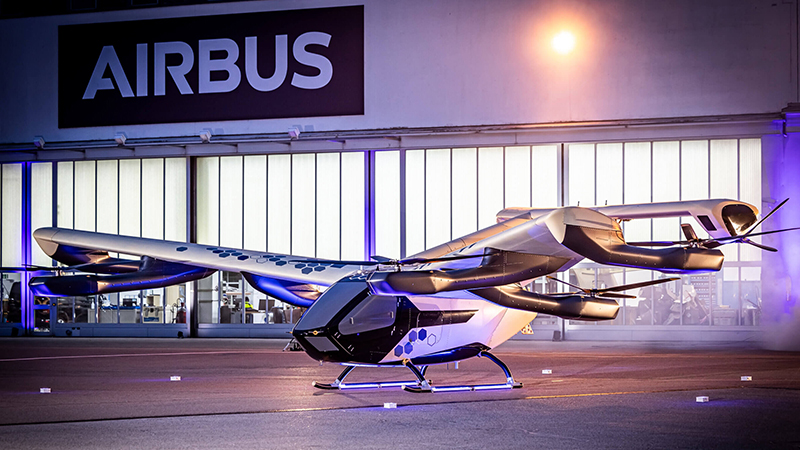

Image Courtesy: Airbus
Considering its prominence in the aerospace industry, Airbus has remained reasonably quiet in the eVTOL sector. That is until recently when it revealed the concept design for its CityAirbus NextGen.
So, what does the design include, and what impact can we expect this to have on the industry? Let’s take a look.
The CityAirbus NextGen is a fixed-wing all-electric VTOL designed, unsurprisingly, for inner-city, short-range travel. Despite the original prototype being unveiled in 2019, it was only in March 2024 that Airbus released information about the NextGen prototype.
Designed by the Airbus Helicopters division, the eVTOL includes a 12-metre wingspan, V-shaped tail and eight electric propellers. Weighing in at two tonnes, it’s a pretty hefty eVTOL that’ll be capable of carrying four people. Initially, this will include a pilot but, as is the case with other designs, the plan is to shift to automated flight in the future.
As for its stats, the CityAirbus NextGen will have a range of 80km and a cruise speed of 120km/h. While there are obviously designs with far greater range, these figures are pretty standard for an urban eVTOL setup.
But how does this shape up to other designs? Take the VoloCity, for example. It weighs in at 900kg and has a range of 35km and a cruising speed of 110km/h. Also, it’s designed to carry two people, including the pilot.
As a brief comparison, we can see that the CityAirbus is twice as heavy, carries twice as many passengers, and has a far greater range at a slightly faster speed. Although there are plenty of other comparable models, this is illustrative of its position in the market.
Airbus releasing a public design for its eVTOL will have a pretty major impact on the current state of the market. If nothing else, having the weight of such a significant player behind it will give the CityAirbus a boost in terms of design potential and testing facilities.
Importantly, too, Airbus has devoted 1,000km of flight hours to testing its previous CityAirbus design. As such, it’s in a pretty good position to publicly test the NextGen model. With its maiden flight expected later in 2024, though, it’ll be a while until it can be launched into public service.
Considering Volocopter is planning to use its eVTOL at the summer Olympics, Airbus is slightly behind the curve. But will this have an effect on its potential? Possibly not. After all, different designs will play different roles in cities, even within the urban air mobility market.
For example, a fixed-wing eVTOL will have less manoeuvrability around buildings. We might see a model like the CityAirbus used as airport connections or suburban-to-urban links instead. Its superior range will give it a leg up in this niche as opposed to being a dedicated urban taxi.
The bottom line is that, from a design perspective, the CityAirbus is a fairly standard fixed-wing eVTOL. However, its competitive advantage is coming to the market with all the weight of Airbus Helicopters behind it. While there’s no set rollout date, its entry into the market will certainly have an exciting impact on the commercial viability of eVTOLs.


